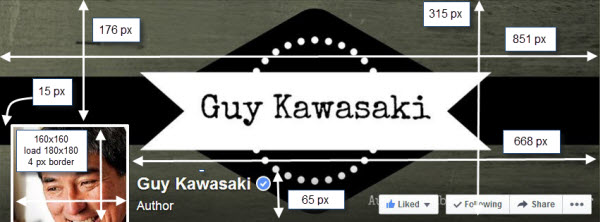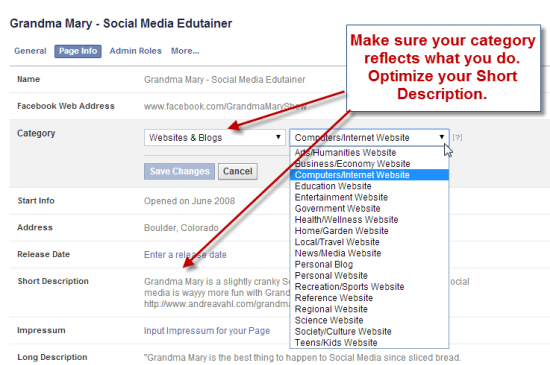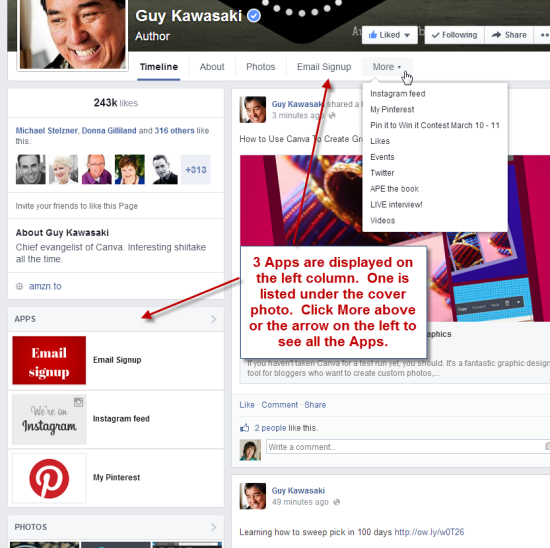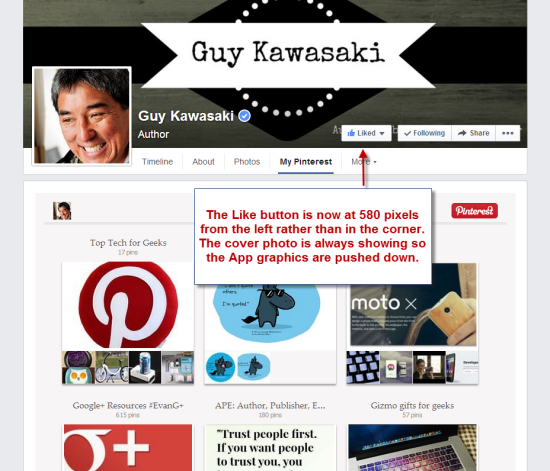Here are some great and timely pointers from Social Media Coach Andrea Vahl originally posted on her website.
You have undoubtedly heard the news that the new Facebook Timelines are rolling out to Pages sometime soon. Facebook announced the Timeline rollout on March 10th and some Pages have it already, including Guy Kawasaki and The Nonprofit Facebook Guy (aka John Haydon). There are 4 critical changes that you can prepare for right now.
You can also see the Like button and Share button is also incorporated into the bottom portion of your cover photo. Remove any writing in the lower 65 pixels of your cover photo. And you probably want to allow for a border above that space as well.

You may also want to consider removing your company name if you have it in the cover photo since it will always appear there with the overlay. Notice that The Nonprofit Facebook Guy shows just a tagline on his cover photo.
This is also a good time to review your Short Description and Long Description and see if those need updates as well.

Your most important App should be first, in this case the Email Signup and then your next 2 best Apps should be listed next. This is similar to the current layout where you have 3 available Apps (including the Photos) that you are showing on the first line of your Apps area. The App cover photo sizes remain the same at 111 x 74 px.

You also notice that the Cover Photo is always showing so that any App you select is displaying lower than it used to. There may not be any adjustments needed for this but something to be aware of.

The other major change is the single column Timeline. I think this will make the Timelines more readable again. What are your thoughts about the new Timeline layout? Let us know.
You have undoubtedly heard the news that the new Facebook Timelines are rolling out to Pages sometime soon. Facebook announced the Timeline rollout on March 10th and some Pages have it already, including Guy Kawasaki and The Nonprofit Facebook Guy (aka John Haydon). There are 4 critical changes that you can prepare for right now.
#1 Adjust Your Cover Photo
This is the biggest change that you want to prepare for right away. The profile photo is the same size but it is now moved up farther into the cover photo image and the title of your page and category is now incorporated in the lower half of your cover photo. Adjust any text or important images that may be under the profile photo.You can also see the Like button and Share button is also incorporated into the bottom portion of your cover photo. Remove any writing in the lower 65 pixels of your cover photo. And you probably want to allow for a border above that space as well.

You may also want to consider removing your company name if you have it in the cover photo since it will always appear there with the overlay. Notice that The Nonprofit Facebook Guy shows just a tagline on his cover photo.
#2 Adjust Your Category
If you haven’t done so already, make sure the Category of your Page reflects what you do. The Category is much more prominent in the new Facebook Timeline. Go to Edit Page, then Update Page Info to check your Page category.This is also a good time to review your Short Description and Long Description and see if those need updates as well.

#3 Choose your 3 Best Apps that you will display
The Apps section can now be found in two places. Once under the More button right below the cover photo and also on the left sidebar.Your most important App should be first, in this case the Email Signup and then your next 2 best Apps should be listed next. This is similar to the current layout where you have 3 available Apps (including the Photos) that you are showing on the first line of your Apps area. The App cover photo sizes remain the same at 111 x 74 px.

#4 Adjust any graphics on your Apps
If you have an arrow on any App graphic that points to the Like button, it is now moved from the right corner to 580 pixels from the left side. So you may want to adjust that arrow.You also notice that the Cover Photo is always showing so that any App you select is displaying lower than it used to. There may not be any adjustments needed for this but something to be aware of.

The other major change is the single column Timeline. I think this will make the Timelines more readable again. What are your thoughts about the new Timeline layout? Let us know.







 Can you tell me a bit more about the test and participants?
Can you tell me a bit more about the test and participants? 
